Owning a home is a cherished dream, but with great comfort comes great responsibility. Behind the picture-perfect façade of your residence, there might be lurking a multitude of potential disasters that could strike at any time. In this comprehensive guide, we will explore 100 home disasters waiting to happen, shedding light on potential risks that homeowners often overlook.
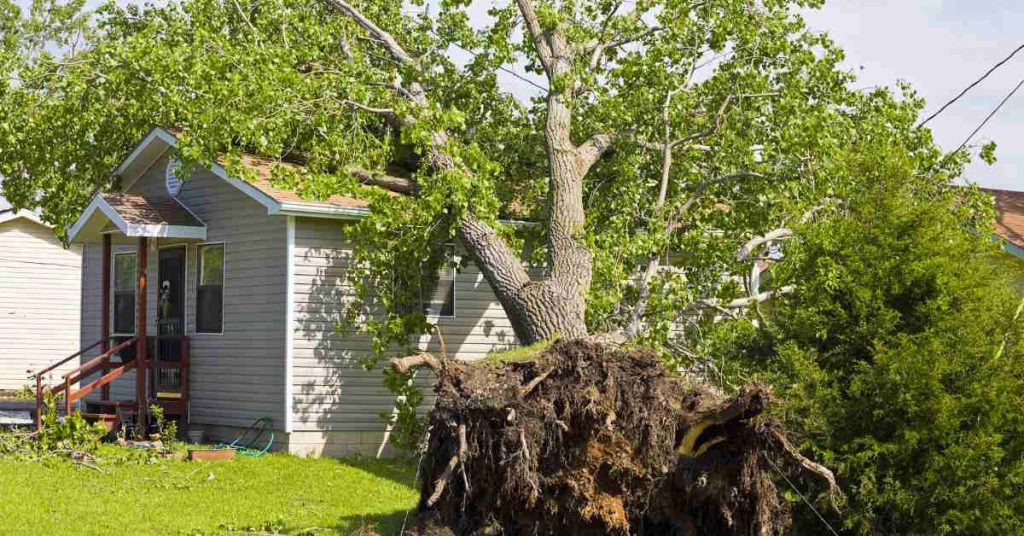
From minor inconveniences to major calamities, we’ll delve into the details of each disaster and provide valuable insights on how to prevent them. So, buckle up as we embark on a journey to safeguard your haven and ensure a secure and worry-free living space.
1. Neglected Roof Maintenance
A poorly maintained roof can spell disaster. Over time, shingles can crack, allowing water to seep through and damage your home’s structure. Schedule regular inspections and promptly address any issues to prevent costly water damage and potential mold growth.
2. Clogged Gutters

When gutters are clogged with leaves and debris, rainwater can overflow, damaging your roof, siding, and foundation. Regularly clean gutters and install guards to keep them debris-free and ensure proper drainage.
3. Outdated Wiring
Obsolete or faulty wiring poses a fire hazard. Replace outdated systems, and be vigilant for flickering lights, warm outlets, or frequently tripped breakers. Professional inspections can identify potential risks and save you from a potential electrical catastrophe.
4. Faulty Plumbing
Leaky pipes, burst hoses, or a malfunctioning water heater can flood your home. Regularly inspect plumbing, fix leaks promptly, and consider installing water leak detectors to catch issues early and prevent extensive water damage.
5. Unmaintained HVAC Systems

Neglecting your heating, ventilation, and air conditioning (HVAC) systems can lead to inefficiency, breakdowns, and potential health hazards. Schedule regular maintenance, change filters, and address any issues promptly to keep your home comfortable and safe.
6. Improperly Ventilated Attic
Inadequate attic ventilation can lead to moisture buildup, causing mold, mildew, and compromising your roof’s integrity. Ensure proper ventilation by installing vents and fans, preventing potential structural damage and health risks.
7. Overloaded Electrical Outlets
Plugging too many devices into a single outlet can lead to overheating, electrical fires, and damage to your appliances. Use power strips and avoid daisy-chaining multiple devices to a single outlet to reduce the risk of electrical disasters.
8. Unchecked Termites and Pests
Termites and pests can silently wreak havoc on your home’s structure. Regularly inspect for signs of infestation, such as wood damage or droppings, and consider professional pest control measures to safeguard your property.
9. Failing Foundation
Cracks in your home’s foundation can compromise its structural integrity. Regularly inspect for cracks, settling, or unevenness and consult a professional for foundation repairs to prevent a potential disaster.
10. Blocked Chimney
A blocked chimney can lead to carbon monoxide buildup, chimney fires, and poor ventilation. Schedule regular chimney inspections and cleanings to ensure proper airflow and reduce the risk of hazardous situations.
11. Rotten Wood Siding
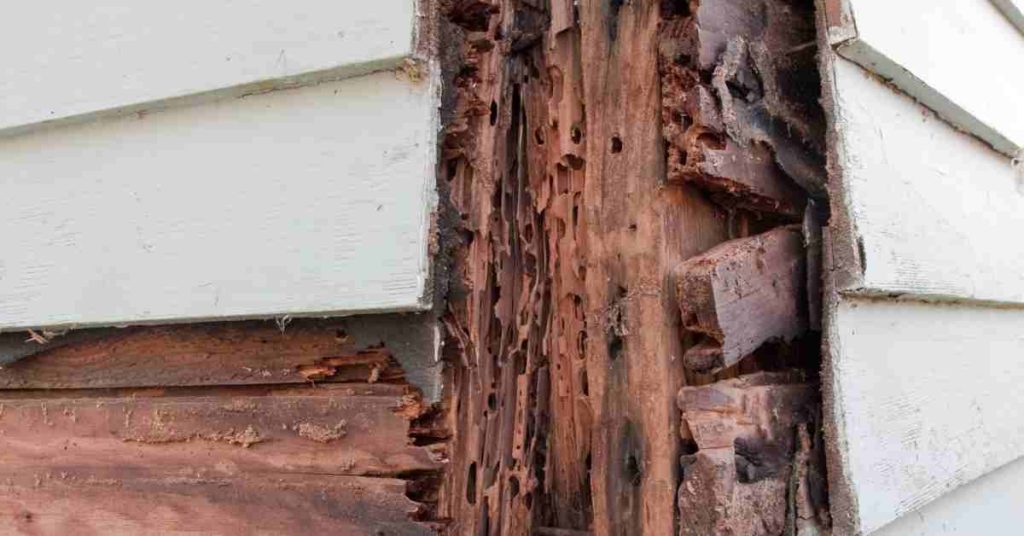
Rotten wood siding not only diminishes your home’s aesthetic appeal but also invites water damage and pest infestation. Regularly inspect and replace any rotted siding to maintain your home’s structural integrity and curb appeal.
12. Cracked or Leaking Windows
Cracks or leaks in windows can lead to energy inefficiency, water damage, and mold growth. Seal gaps, replace damaged weather stripping, and repair or replace windows to keep your home comfortable and protected from the elements.
13. Lack of Fire Extinguishers
Without proper fire extinguishers in key locations, a small fire can quickly become a catastrophe. Install fire extinguishers in the kitchen, garage, and other high-risk areas, and educate your family on their proper use.
14. Unsecured Furniture
Earthquakes, toddlers, or even a clumsy moment can turn unsecured furniture into a safety hazard. Anchor heavy furniture to the wall to prevent tip-overs, ensuring a safer living environment for everyone in your home.
15. Old or Damaged Water Heater

A neglected water heater can cause leaks, flooding, or even explosions. Regularly check for rust, corrosion, or unusual noises and replace your water heater if it’s outdated or showing signs of distress.
16. Excessively Cluttered Spaces
Overcrowded spaces not only look messy but can impede emergency exits and create a fire hazard. Declutter regularly, keeping pathways clear to ensure a safe escape route in case of an emergency.
17. Ignoring Radon Gas
Radon is a colorless, odorless gas that can seep into your home, leading to serious health issues. Test your home for radon regularly and take corrective measures if levels are elevated, ensuring a healthy indoor environment.
18. Defective or Absent Carbon Monoxide Detectors
Carbon monoxide is a silent killer, and without detectors, its presence can go unnoticed. Install carbon monoxide detectors in key areas, such as bedrooms and hallways, to provide early warnings and prevent potential fatalities.
19. Flammable Materials Near Appliances
Keep flammable materials like dishcloths, paper towels, or curtains away from heat-producing appliances to reduce the risk of fires. Practice kitchen safety by maintaining a clutter-free environment while cooking.
20. Unsealed Basements
An unsealed basement is susceptible to water damage and mold growth. Seal cracks, install a sump pump if necessary, and use waterproofing methods to keep your basement dry and prevent potential structural damage.
21. Faulty Garage Door
A malfunctioning garage door can pose a security risk and lead to accidents. Regularly inspect the door’s sensors, tracks, and springs, ensuring smooth and safe operation.
22. Inadequate Outdoor Lighting
Poorly lit exteriors invite accidents and burglaries. Install ample outdoor lighting to illuminate pathways, entrances, and dark corners, enhancing safety and deterring potential intruders.
23. Overgrown Trees Near the House
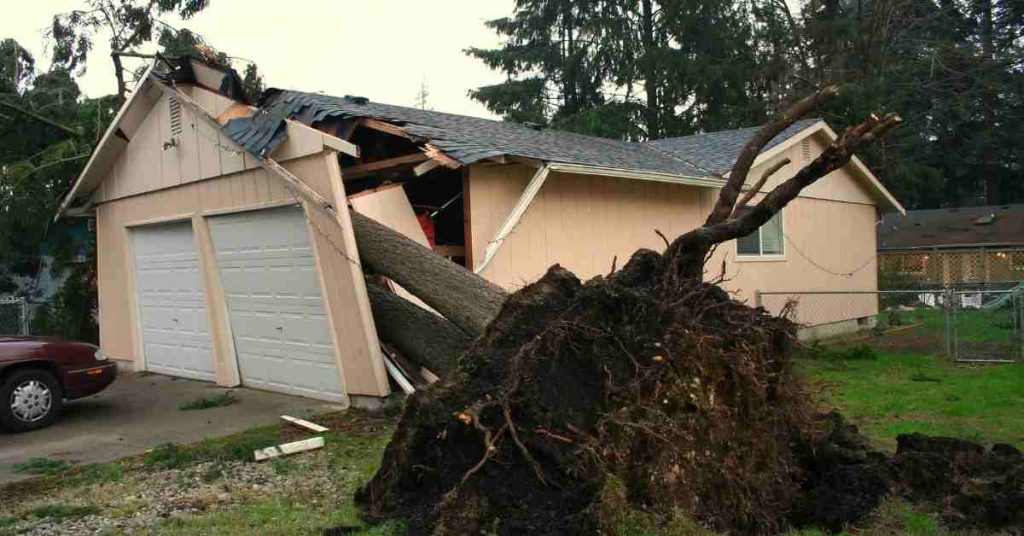
Overgrown trees close to your home pose a threat during storms, increasing the risk of falling branches or even a tree. Trim branches away from the house to prevent potential damage and ensure your safety.
24. Unmaintained Septic Systems
Neglecting septic system maintenance can result in backups, foul odors, and contamination. Schedule regular inspections and pump-outs to keep your septic system in working order and prevent messy and costly disasters.
25. Mold in the Bathroom
Poor ventilation and moisture in bathrooms can lead to mold growth. Install proper ventilation, clean regularly, and address any water leaks to prevent the development of mold and maintain a healthy living space.
26. Worn-Out Garage Door Opener
An aging garage door opener may fail, causing inconvenience or even security issues. Replace worn-out openers promptly, ensuring smooth and reliable operation.
27. Unstable Deck or Balcony
An unstable deck or balcony can result in injuries or structural damage. Regularly inspect for rot, loose fasteners, or weak spots, and address any issues immediately to maintain a safe outdoor space.
28. Unsecured Appliances During Earthquakes
Earthquakes can turn unsecured appliances into projectiles. Use appliance straps to secure heavy items like refrigerators and water heaters, preventing potential injuries and damage during seismic activity.
29. Faulty Smoke Detectors
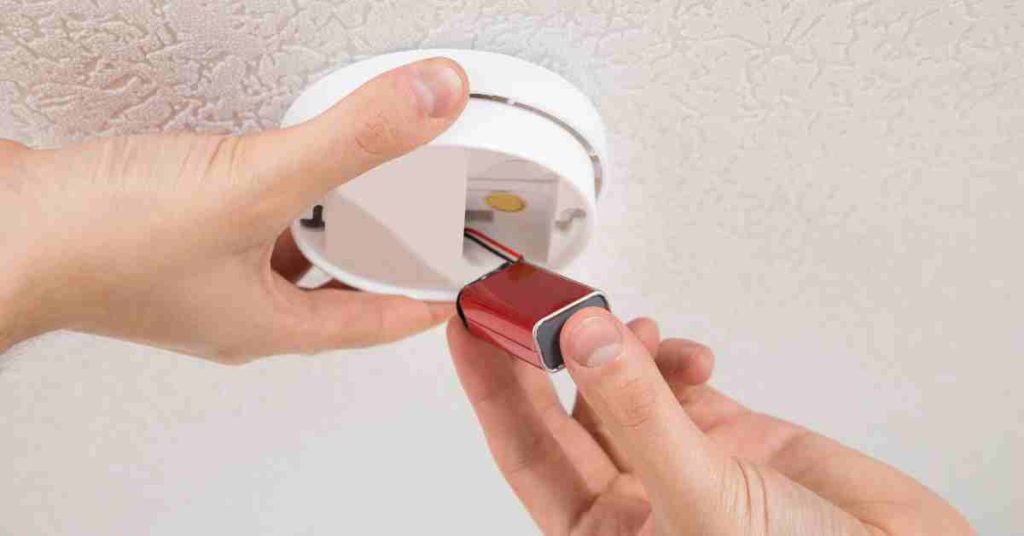
Smoke detectors are crucial for early fire detection. Test smoke detectors monthly, change batteries annually and replace the entire unit every 10 years to ensure they function effectively.
30. Water Leaks Under the Sink
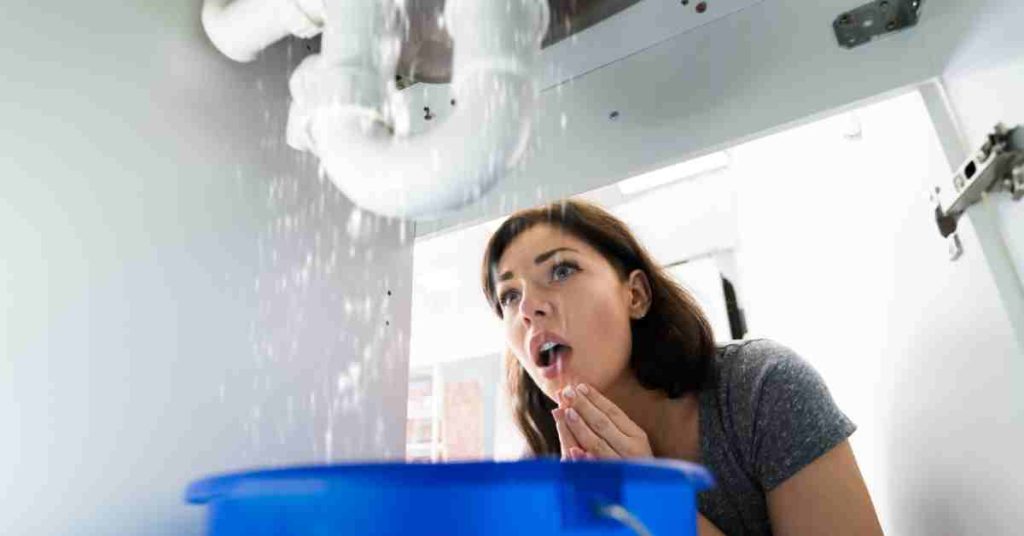
Undetected water leaks under the sink can lead to mold, damaged cabinets, and structural issues. Regularly inspect for leaks, fix them promptly, and consider using water leak detectors to catch issues early.
31. Ineffective Garage Door Sensors
Faulty garage door sensors can lead to accidents and injuries. Regularly test the sensors by placing an object in the door’s path during closing to ensure it stops and reverses promptly.
32. Cracks in the Foundation

Small cracks in the foundation may seem harmless but can lead to serious structural issues. Monitor and seal foundation cracks promptly to prevent water infiltration and maintain the stability of your home.
33. Poorly Maintained Fireplaces
Creosote buildup, a common issue in fireplaces, can lead to chimney fires. Schedule regular chimney cleanings and inspections to remove creosote and ensure your fireplace is safe for use.
34. Expired Fire Extinguishers
Fire extinguishers have expiration dates and can lose effectiveness over time. Check the expiration date, and replace or recharge extinguishers as needed to ensure they’re ready for use in case of an emergency.
35. Damaged Insulation
Worn or damaged insulation compromises your home’s energy efficiency. Inspect and replace insulation as needed to maintain a comfortable indoor temperature and lower energy bills.
36. Faulty Electrical Wiring in Appliances
Old or damaged wiring in appliances can pose a fire hazard. Regularly inspect cords for fraying or exposed wires and replace any faulty appliances promptly.
37. Excessive Water Pressure
High water pressure can damage pipes, leading to leaks and plumbing disasters. Install a pressure regulator to maintain a safe water pressure level and protect your home’s plumbing system.
38. Inadequate Home Security
Insufficient home security increases the risk of break-ins and theft. Invest in a reliable security system, reinforce doors and windows, and consider motion-activated lights to deter potential intruders.
39. Lack of Carbon Monoxide Alarms
Carbon monoxide is odorless and deadly. Install carbon monoxide alarms on every level of your home, especially near bedrooms, to provide early warnings and protect your family from this silent threat.
40. Unmaintained Outdoor Sprinkler System
A neglected sprinkler system can lead to overwatering, water damage, and increased water bills. Regularly inspect and maintain your sprinkler system to ensure efficient water distribution and prevent potential disasters.
41. Unattended Leaks in the Ceiling

Leaking ceilings may indicate roof issues or plumbing problems. Promptly address any water stains, investigate the source of leaks, and fix the underlying problem to prevent further damage and mold growth.
42. Outdated or Faulty Garage Door Springs
Worn-out or broken garage door springs can cause the door to malfunction. Regularly inspect and replace springs as needed to ensure the safe and reliable operation of your garage door.
43. Ignored Termite Infestations
Termites can silently destroy the structural integrity of your home. Schedule regular termite inspections and address infestations promptly to prevent extensive and costly damage.
44. Unsecured Heavy Furniture
Unsecured heavy furniture poses a risk, especially in earthquake-prone areas. Use anchors to secure furniture like bookshelves and cabinets to prevent tipping and potential injuries.
45. Faulty Refrigerator Water Line
A leaking refrigerator water line can lead to water damage and mold growth. Regularly check the water line for leaks and replace it if damaged, ensuring your kitchen stays dry and mold-free.
46. Cracked Chimney Crown
A cracked chimney crown can allow water to penetrate, leading to damage and leaks. Regularly inspect and repair chimney crowns to protect your chimney and prevent water-related disasters.
47. Obsolete Smoke Alarms
Smoke alarms have a limited lifespan. Replace outdated smoke alarms every 10 years to ensure they function correctly and provide early warnings in the event of a fire.
48. Unprotected Outdoor Air Conditioning Unit
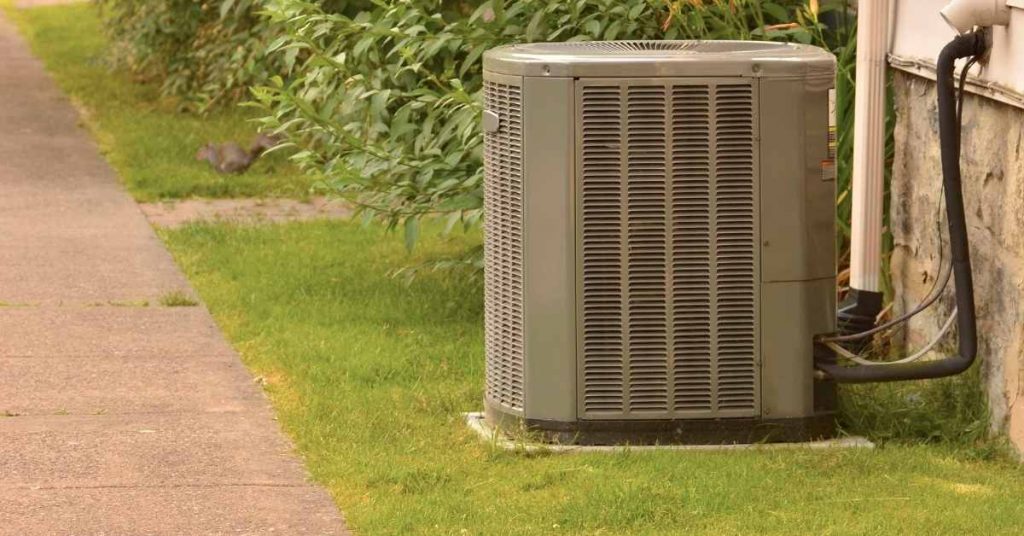
Exposed air conditioning units are susceptible to weather damage and vandalism. Install a protective cover or fencing around the outdoor unit to extend its lifespan and prevent potential issues.
49. Unmaintained Fire Sprinkler Systems
Neglecting fire sprinkler systems can result in malfunctions during emergencies. Schedule regular inspections, tests, and maintenance to ensure your fire sprinkler system is ready to respond effectively when needed.
50. Overlooking Dryer Vent Maintenance
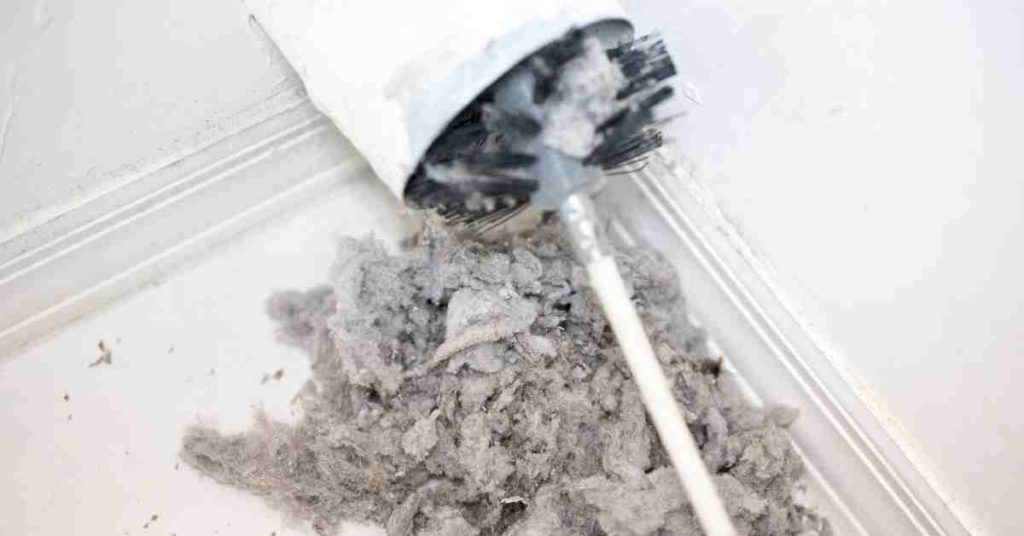
Clogged dryer vents are a fire hazard. Regularly clean lint traps and vents, ensuring proper airflow and reducing the risk of a dryer-related fire.
51. Worn-Out Garage Door Rollers
Over time, garage door rollers can wear out, causing the door to operate less smoothly. Regularly inspect and replace worn-out rollers to prevent unnecessary strain on the garage door opener and ensure optimal functionality.
52. Faulty Sump Pump

A malfunctioning sump pump can lead to basement flooding, especially during heavy rain or melting snow. Test your sump pump regularly, replace it if necessary, and install a battery backup for added protection.
53. Unsecured Tall Furniture and Appliances
Tall furniture and appliances, like bookshelves and refrigerators, can tip over if not properly secured. Anchor them to the wall to prevent accidents, particularly in homes with curious children.
54. Overlooking Foundation Vents
Blocked or closed foundation vents can lead to moisture buildup in crawl spaces, inviting mold and pests. Ensure foundation vents are open and clear to maintain proper ventilation and prevent potential issues.
55. Lack of Routine HVAC Filter Changes

Neglecting HVAC filter changes can result in reduced efficiency and increased energy bills. Change filters regularly to ensure proper airflow and prevent strain on your heating and cooling systems.
56. Ignoring Signs of Water Stains on Walls
Water stains on walls can indicate leaks or plumbing issues. Investigate and address the source of water stains promptly to prevent further damage and potential mold growth.
57. Damaged or Missing Roof Flashing
Roof flashing protects vulnerable areas from water penetration. Regularly inspect and replace damaged or missing flashing to prevent water leaks and extend the life of your roof.
58. Neglected Lawn Drainage
Poor lawn drainage can lead to water pooling around the foundation, risking water damage and foundation issues. Ensure proper lawn grading and drainage to divert water away from your home.
59. Unsealed Outdoor Wood
Unsealed outdoor wood, such as decks and fences, is susceptible to rot and decay. Regularly apply sealant or stain to protect outdoor wood from the elements and extend its lifespan.
60. Overgrown or Dying Trees Near Power Lines
Overgrown or dying trees near power lines pose a risk of electrical outages and safety hazards. Trim or remove trees near power lines to prevent potential disasters during storms.
61. Ignoring Creaky or Unstable Staircases
Creaky or unstable staircases pose a tripping hazard and can lead to serious injuries. Regularly inspect and repair any loose steps, banisters, or handrails to maintain a safe and secure staircase.
62. Unsecured Water Heater
An unsecured water heater can tip over during earthquakes or other disasters. Use earthquake straps to secure your water heater, preventing it from causing damage and potential gas leaks.
63. Neglected Exterior Paint
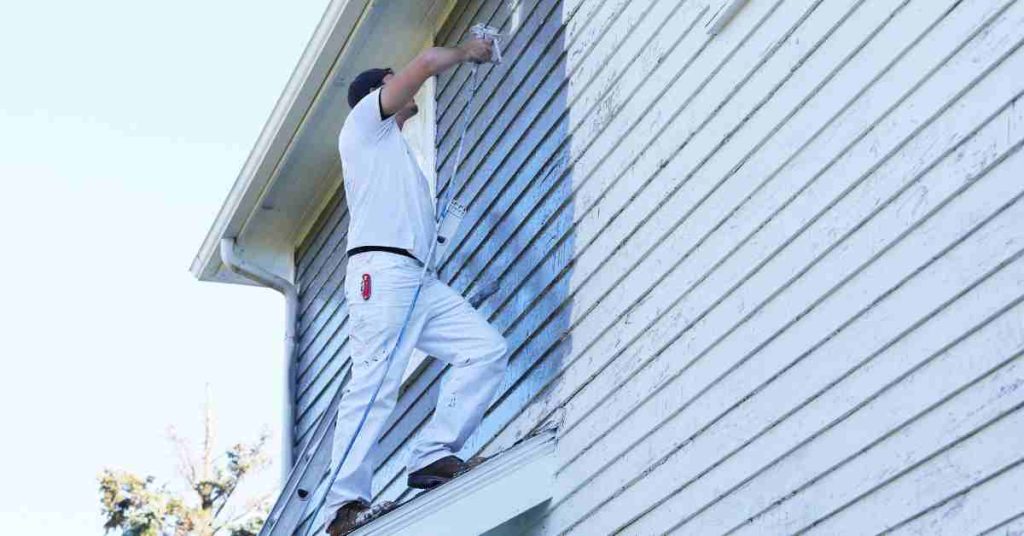
Peeling or chipped exterior paint exposes your home to the elements, leading to wood rot and structural damage. Repaint your home’s exterior as needed to protect against water damage and maintain its overall integrity.
64. Unmaintained Swimming Pool
A neglected swimming pool can become a breeding ground for bacteria and pose safety risks. Regularly clean and maintain your pool, ensuring proper chemical balance and addressing any necessary repairs.
65. Malfunctioning Garage Door Opener Safety Sensors
Faulty safety sensors on garage door openers can lead to accidents. Test and align the sensors regularly to ensure they detect obstacles and prevent the door from closing on people or objects.
66. Outdated Gas Lines
Old or corroded gas lines can pose a significant safety risk. Schedule regular inspections, and promptly replace any outdated or damaged gas lines to prevent gas leaks and potential explosions.
67. Unsecured Bookshelves and Cabinets
Unsecured bookshelves and cabinets can tip over, especially in homes with children. Anchor them to the wall to prevent accidents and ensure the safety of your family.
68. Inadequate Exterior Drainage
Poor drainage around your home’s exterior can lead to water damage and foundation issues. Install proper drainage solutions, such as downspout extensions and French drains, to divert water away from your home.
69. Neglected Garage Door Maintenance
Lack of regular maintenance on garage doors can result in malfunctions. Lubricate moving parts, tighten hardware, and schedule professional inspections to ensure your garage door operates smoothly and safely.
70. Unattended Leaks in the Basement
Basement leaks can lead to mold, mildew, and structural damage. Address any signs of leaks promptly, and consider waterproofing solutions to keep your basement dry and protected.
71. Ignoring Leaks Around Windows and Doors
Leaky windows and doors can lead to water damage and decreased energy efficiency. Regularly inspect and reseal gaps to prevent water infiltration and maintain a comfortable indoor environment.
72. Unsecured Heavy Mirrors and Artwork
Heavy mirrors and artwork can become dangerous projectiles during earthquakes or accidents. Secure them to the wall using appropriate brackets and anchors to prevent injuries and damage.
73. Neglected Lawn Equipment Maintenance
Unmaintained lawn equipment, such as lawnmowers and trimmers, can pose a fire hazard. Regularly service and inspect your lawn equipment to ensure they operate safely and efficiently.
74. Ignoring Signs of Foundation Settlement
Cracks in walls or uneven floors may indicate foundation settlement. Promptly address any signs of foundation issues to prevent further structural damage and maintain the stability of your home.
75. Unmaintained Outdoor Lighting
Overgrown vegetation around outdoor lights can pose a fire risk. Regularly trim vegetation, replace burnt-out bulbs, and ensure proper electrical connections to prevent outdoor lighting disasters.
76. Old or Damaged Electrical Panels
Obsolete or damaged electrical panels can lead to electrical fires. Schedule an inspection by a qualified electrician, and upgrade or replace outdated panels to ensure the safety of your home.
77. Neglected HVAC Duct Cleaning
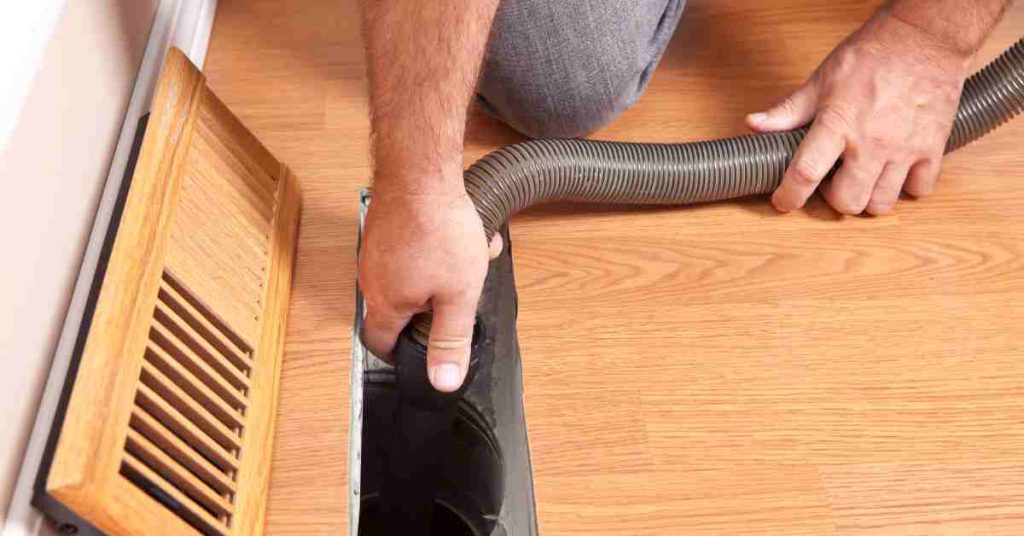
Dirty HVAC ducts can circulate dust, allergens, and mold throughout your home. Schedule regular duct cleaning to maintain indoor air quality and prevent potential health hazards.
78. Unprotected Outdoor Wooden Structures
Wooden structures like decks and pergolas are vulnerable to weather damage. Apply a protective sealant or stain regularly to prevent rot, decay, and ensure the longevity of outdoor wooden elements.
79. Disregarding Appliance Recalls
Appliance recalls are issued for safety reasons. Stay informed about recalls and promptly address or replace recalled appliances to prevent potential hazards in your home.
80. Unsecured Area Rugs and Carpets
Unsecured rugs and carpets can cause tripping hazards. Use non-slip pads or adhesives to secure area rugs, ensuring a safe and accident-free living space.
81. Neglected Garage Floor Drain Maintenance
Garage floor drains can become clogged with debris and dirt over time. Regularly clean and maintain these drains to prevent water accumulation, mold growth, and potential damage to your garage.
82. Ignoring Signs of Dry Rot in Wooden Structures
Dry rot in wooden structures compromises their strength and integrity. Regularly inspect wooden components, such as decks and framing, for signs of dry rot, and promptly address the issue to prevent further damage.
83. Unmaintained Automatic Sprinkler Systems
Automated sprinkler systems require regular maintenance to ensure proper functionality. Check for leaks, clogs, and misaligned sprinkler heads, and adjust the system as needed to prevent water waste and potential water damage.
84. Overlooking Security System Updates
Security systems may need software updates to stay effective. Regularly check for updates, replace outdated equipment, and ensure your security system is equipped to handle the latest security threats.
85. Neglecting Routine Tree Maintenance
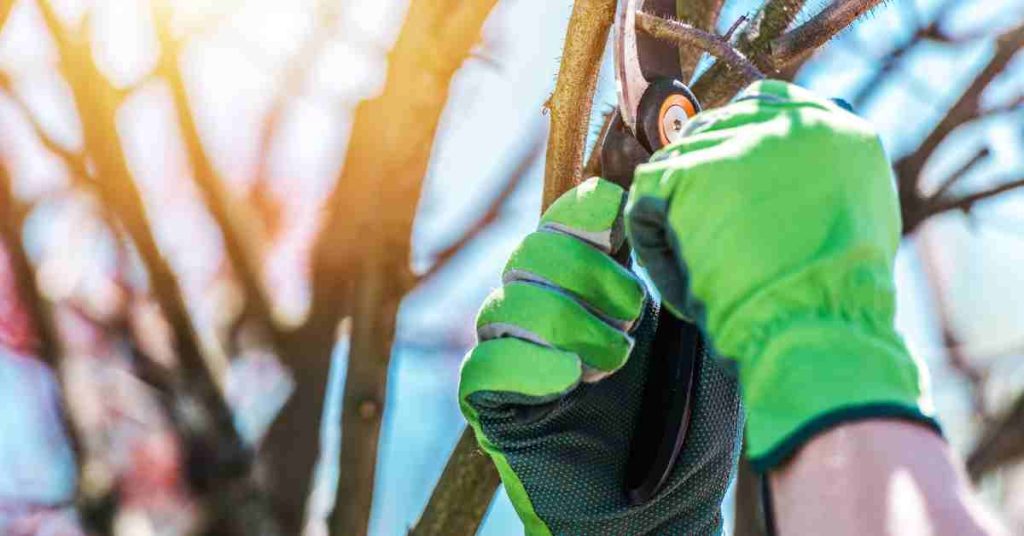
Overgrown or damaged trees can pose risks during storms. Schedule regular tree maintenance, trimming branches, and removing dead limbs to prevent falling trees or branches that can damage your home.
86. Ignoring Signs of Mold in HVAC Systems
Mold growth in HVAC systems can circulate harmful spores throughout your home. Regularly inspect and clean your HVAC components to prevent mold-related health issues and maintain indoor air quality.
87. Unmaintained Outdoor Play Equipment
Play equipment in your backyard can deteriorate over time, leading to safety hazards. Regularly inspect and maintain swings, slides, and other outdoor play structures to ensure a safe and enjoyable play environment for children.
88. Neglected Driveway Maintenance
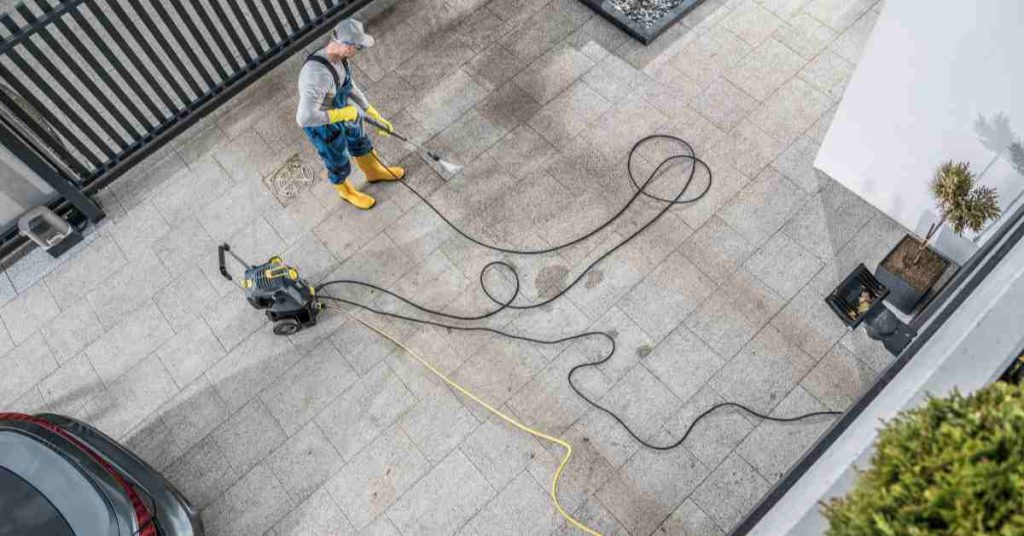
Cracked or uneven driveways can pose safety risks and lead to water pooling. Repair cracks, address potholes, and maintain your driveway to ensure a smooth and safe surface for vehicles and pedestrians.
89. Unsecured Window Air Conditioning Units
Unsecured window AC units can pose a falling hazard. Secure these units properly to prevent accidents, injuries, and potential damage to the exterior of your home.
90. Unattended Rust on Metal Surfaces
Rust on metal surfaces, such as railings and pipes, weakens their structural integrity. Regularly inspect metal components, and address rust by cleaning, priming, and painting to prevent further deterioration.
91. Neglecting Garage Ceiling Insulation
A poorly insulated garage ceiling can result in temperature extremes, potentially damaging items stored in the garage. Insulate the ceiling to regulate temperature and protect stored belongings from adverse conditions.
92. Unsealed Grout in Bathrooms and Kitchens
Unsealed grout in bathrooms and kitchens is prone to water penetration and mold growth. Regularly inspect and reseal grout lines to prevent water damage and maintain a clean and hygienic environment.
93. Unattended Leaks in Dishwasher or Washing Machine
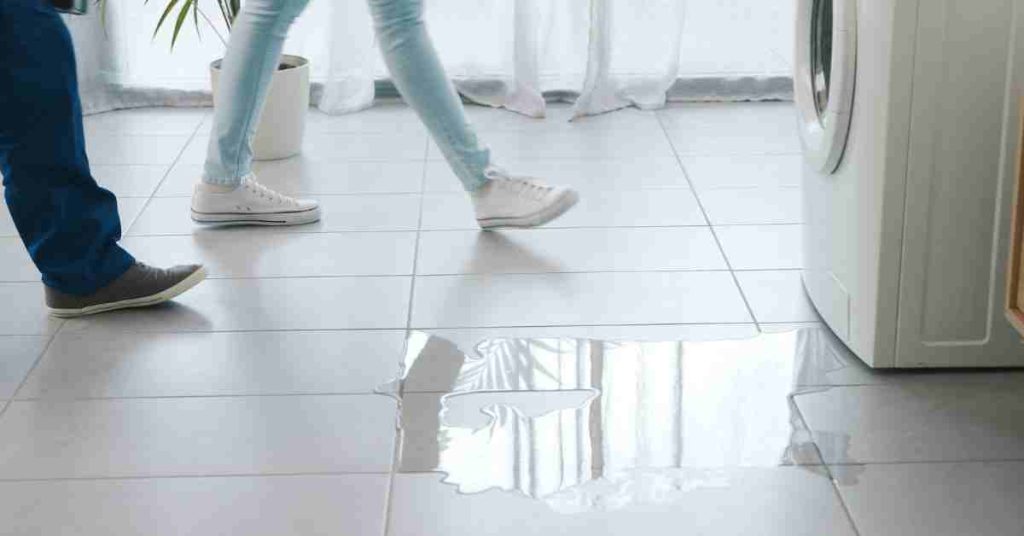
Leaks from dishwashers or washing machines can go unnoticed and lead to water damage. Regularly check for leaks, inspect hoses, and address any issues promptly to prevent potential flooding disasters.
94. Ignoring Signs of Pest Infestation in Attics
Pests in attics can cause structural damage and health hazards. Regularly inspect for signs of pests, such as droppings or gnawed wood, and implement pest control measures to safeguard your home.
95. Overlooking Loose or Worn Handrails
Loose or worn handrails on stairs or balconies can lead to accidents. Regularly inspect and tighten handrails, ensuring they are secure to prevent falls and injuries.
96. Unmaintained Outdoor Drainage Systems
Clogged or damaged outdoor drainage systems can result in flooding and erosion. Regularly clear debris from gutters and downspouts, and inspect drainage systems to prevent water-related disasters.
97. Ignoring Signs of Foundation Heaving
Foundation heaving can cause structural damage and affect the stability of your home. Monitor for signs such as cracks or uneven floors, and consult with professionals to address foundation issues promptly.
98. Unsecured Tall Bookshelves
Tall bookshelves can pose a falling hazard, especially in earthquake-prone areas. Secure tall bookshelves to the wall using brackets or anchors to prevent accidents and injuries.
99. Neglected Garage Wall Inspection
Garage walls are susceptible to moisture and damage. Regularly inspect garage walls for signs of water infiltration, cracks, or damage, and address issues promptly to prevent structural problems.
100. Disregarding Manufacturer Recalls on Appliances
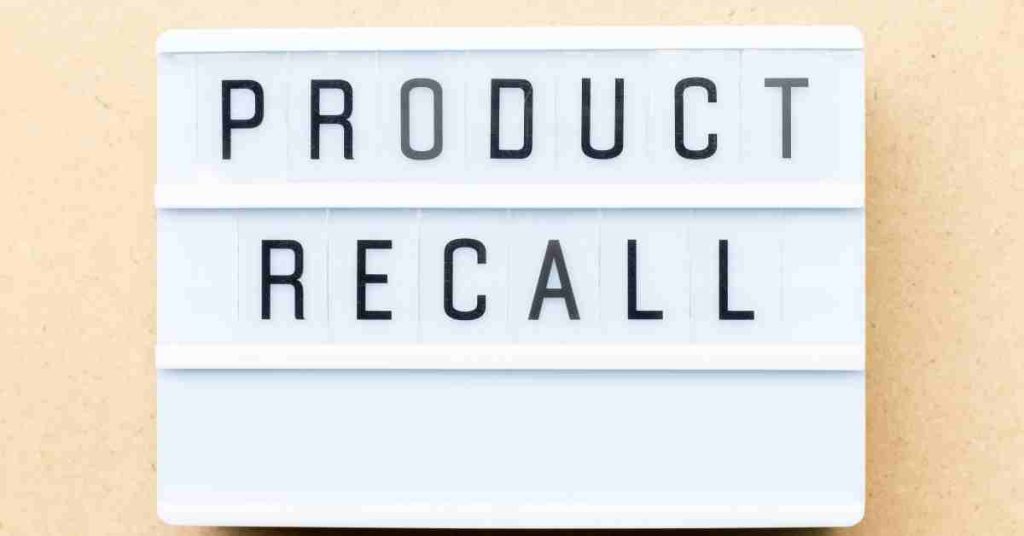
Manufacturer recalls on appliances are issued for safety reasons. Stay informed about recalls, and promptly address or replace recalled appliances to prevent potential hazards in your home.
Conclusion
In the intricate dance between homeowner and habitat, our exploration of “100 Home Disasters Waiting to Happen” concludes with a symphony of insights and preventative measures. As we’ve traversed the realms of leaky roofs, faulty wiring, and unsecured furniture, a vivid portrait of potential disasters has emerged—one that demands your attention and proactive care.
Imagine your home not merely as bricks and mortar, but as a living entity deserving of constant guardianship. Armed with the knowledge of these 100 scenarios, you hold the keys to a fortress resilient against unforeseen challenges. Your commitment to preventative measures transforms your dwelling into an impervious sanctuary, where safety reigns supreme.





